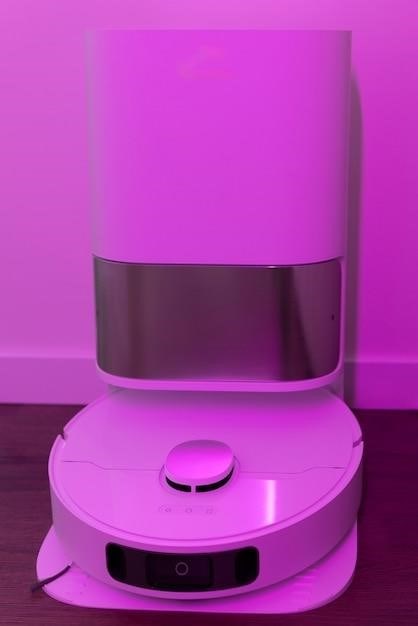Vacuum Technology Fundamentals
This section delves into the foundational principles of vacuum technology. Explore the kinetic behavior of gases within a vacuum environment and how various vacuum pump types achieve and maintain low pressures. Understand the operational mechanisms and applications of different vacuum gauges, crucial for pressure measurement and control in vacuum systems.
Gas Kinetic Processes in Vacuum
Understanding gas kinetic processes is fundamental to vacuum technology. At pressures significantly below atmospheric, the mean free path of gas molecules—the average distance a molecule travels between collisions—becomes considerably larger. This impacts how gases behave, transitioning from a continuum regime to a molecular flow regime where individual molecular interactions dominate. Collisions between gas molecules and the chamber walls become more frequent than intermolecular collisions, influencing the overall pressure and gas distribution within the vacuum system. This molecular flow regime dictates the behavior of gases in high and ultra-high vacuum applications. The concepts of mean free path, Knudsen number (the ratio of the mean free path to a characteristic system dimension), and various flow regimes (molecular, transitional, viscous) are crucial for designing and operating efficient vacuum systems. Understanding these processes is essential for predicting and controlling gas flow and pressure, influencing pump selection, system design, and overall performance.
Types and Operation of Vacuum Pumps
A wide array of vacuum pumps exists, each suited to specific pressure ranges and applications. Rotary vane pumps, for example, use rotating vanes within a cylindrical housing to trap and displace gas, achieving moderate vacuum levels. Diaphragm pumps employ a flexible diaphragm to create a pumping action, often used for corrosive or chemically sensitive gases. Scroll pumps utilize two intermeshing spirals to compress and exhaust gases, offering quiet and oil-free operation. Turbomolecular pumps employ high-speed rotors with blades to impart momentum to gas molecules, achieving very low pressures. Cryopumps utilize extremely low temperatures to freeze gases onto a cold surface, providing high pumping speeds for specific gases. The choice of pump depends critically on factors such as the ultimate pressure required, pumping speed, gas type, budget, and maintenance requirements. Understanding the operational principles of these different pump types is paramount for selecting the most suitable technology for a given application.
Vacuum Gauge Principles and Applications
Accurate pressure measurement is essential in vacuum technology. Various gauge types cater to different pressure ranges. Thermocouple gauges utilize the principle of heat loss in a heated filament to measure pressure, suitable for a relatively high-pressure range. Pirani gauges operate similarly but offer greater sensitivity. Ionization gauges, such as Bayard-Alpert gauges, use electron ionization of gas molecules to measure very low pressures, essential in high-vacuum applications. Capacitance manometers, relying on the change in capacitance of a pressure-sensitive element, provide high accuracy across a wide pressure range. Choosing the correct gauge depends on the desired pressure range, accuracy requirements, and compatibility with the process gases. Accurate gauge selection ensures reliable process control and monitoring in diverse applications such as semiconductor manufacturing, thin-film deposition, and scientific research.
Advanced Vacuum Techniques
This section explores high-vacuum and ultra-high vacuum (UHV) technologies, crucial for specialized applications demanding extremely low pressures. Learn about the design considerations and challenges associated with achieving and maintaining UHV conditions.
High-Vacuum Technology and its Applications
High-vacuum technology, achieving pressures below 10-3 Pa, opens doors to numerous scientific and industrial applications. The creation of high vacuum necessitates specialized equipment and techniques, often involving multiple pumping stages and meticulous system design to minimize leaks. Turbomolecular pumps, ion pumps, and cryopumps are commonly employed to reach and maintain these low pressures. Their effectiveness hinges on efficient gas removal mechanisms, ranging from mechanical drag to trapping and ionization. Maintaining ultra-cleanliness is paramount; surface outgassing from chamber walls and components can significantly compromise the vacuum. Therefore, materials selection plays a critical role, favoring low-outgassing materials like stainless steel and specialized coatings. The precise pressure control and monitoring, often using ion gauges or other sensitive instruments, is essential for process optimization and consistent results.
High-vacuum applications span diverse fields. In the semiconductor industry, high vacuum is indispensable for thin-film deposition processes like chemical vapor deposition (CVD) and physical vapor deposition (PVD). These processes require pristine environments to prevent contamination and ensure the quality of fabricated components. Electron microscopy, another key application, necessitates high vacuum to maintain a mean free path sufficiently long for electrons to travel unimpeded to the detector. Similarly, particle accelerators rely on high vacuum to minimize particle scattering and maximize beam stability. The attainment and maintenance of high vacuum, therefore, remain crucial for numerous technological advancements, demanding ongoing innovation in vacuum pump design and system engineering.
Ultra-High Vacuum (UHV) Systems and their Design
Ultra-high vacuum (UHV) systems, achieving pressures below 10-7 Pa, demand sophisticated design and construction to minimize sources of gas contamination. These systems are crucial for surface science research, where even minute amounts of residual gas can significantly affect experimental results. UHV system design prioritizes minimizing outgassing from materials, using low-vapor-pressure materials like stainless steel and employing thorough baking processes to remove adsorbed gases. The meticulous selection of seals and gaskets is critical; metal gaskets are often preferred over elastomers to avoid organic contamination. Furthermore, bakeout procedures, involving heating the entire system to high temperatures, are often implemented to desorb adsorbed gases from the chamber walls and components. Efficient pumping is achieved through multi-stage pumping systems, frequently incorporating ion pumps, turbomolecular pumps, and cryopumps, with careful consideration given to their respective pumping speeds and ultimate pressures. The system’s geometry also influences the overall performance; minimizing surface area and optimizing the placement of pumping ports improves the effectiveness of the vacuum. Thorough leak detection is essential, often employing helium leak detectors to locate and repair even minute leaks. System cleanliness is paramount, requiring careful cleaning procedures and the use of specialized cleaning agents. The design of an UHV system is a complex undertaking, emphasizing a holistic approach that encompasses material selection, system geometry, pumping strategies, and rigorous leak detection to achieve and maintain the extremely low pressures required for many scientific and technological processes.

Vacuum Technology in Specific Industries
This section explores the diverse applications of vacuum technology across various industries, highlighting its critical role in semiconductor manufacturing and particle accelerator operations, showcasing its versatility and impact.
Vacuum Technology in Semiconductor Manufacturing
Vacuum technology plays a pivotal role in semiconductor manufacturing, impacting nearly every stage of the fabrication process. The creation of ultra-clean environments is paramount, and vacuum systems excel at removing contaminants and creating the necessary conditions for precise deposition and etching. Chemical Vapor Deposition (CVD) processes, for example, rely heavily on controlled vacuum environments to deposit thin films with exceptional purity and uniformity. These films form the foundation of integrated circuits. Similarly, physical vapor deposition (PVD) techniques, like sputtering and evaporation, utilize vacuum to facilitate the precise deposition of materials onto semiconductor wafers. Plasma etching, a crucial step in microfabrication, also necessitates vacuum conditions to generate and sustain the plasma required for material removal. The precision and cleanliness achieved through vacuum technology are indispensable for the creation of modern microelectronics.
Furthermore, vacuum systems are crucial for ensuring the integrity of the semiconductor wafers throughout the manufacturing process. The transfer and handling of wafers often occur within vacuum chambers to prevent contamination and damage. The stringent cleanliness requirements necessitate vacuum technologies that can create and maintain exceptionally low pressure levels. The consistent advancement of semiconductor technology demands increasingly sophisticated vacuum solutions to meet the shrinking feature sizes and enhanced performance demands of modern integrated circuits. The development of new materials and processes continuously pushes the boundaries of vacuum technology, driving innovation in pump designs, vacuum gauge technology, and chamber design.
Vacuum Applications in Particle Accelerators
Particle accelerators, crucial tools in high-energy physics research, rely extensively on advanced vacuum technologies. Maintaining ultra-high vacuum (UHV) within the accelerator beam pipes is essential for minimizing particle scattering and maximizing beam lifetime. Residual gas molecules within the beam pipe can interact with the accelerated particles, causing energy loss and beam instability. UHV conditions significantly reduce these interactions, allowing particles to travel long distances and reach the desired energies for experiments. The design and construction of these beam pipes necessitate specialized vacuum components such as vacuum pumps, gauges, and seals capable of withstanding high voltages and radiation. Different types of vacuum pumps, including ion pumps and turbomolecular pumps, are employed depending on the required pressure level and application within the accelerator.
Furthermore, the precise control and monitoring of the vacuum environment are critical for optimal accelerator performance. Advanced vacuum gauges provide real-time pressure readings, enabling operators to identify and address potential leaks or pressure fluctuations. The successful operation of particle accelerators often involves complex vacuum systems with multiple pumping stages and sophisticated control systems; The ongoing pursuit of higher energies and more precise experiments drives the development of even more sophisticated vacuum technologies for future generations of particle accelerators. These advancements not only benefit fundamental research but also find applications in other fields, such as medical imaging and industrial processing.

Resources and Further Learning
For those seeking to deepen their understanding of vacuum technology, numerous resources are readily available. Several textbooks offer comprehensive coverage of the subject, including “Modern Vacuum Practice” by Harris, “Vacuum Technology” by Roth, and “Foundations of Vacuum Science and Technology” by Lafferty. These texts provide detailed explanations of fundamental principles, practical applications, and advanced techniques. Furthermore, scientific journals such as the “Journal of Vacuum Science and Technology (A)” publish cutting-edge research and advancements in the field. These publications offer insights into the latest developments and breakthroughs in vacuum technology. Online resources also provide valuable information, including websites of manufacturers of vacuum equipment and components. These websites often feature technical documentation, application notes, and tutorials. Additionally, many universities and research institutions offer courses and workshops on vacuum technology, providing hands-on experience and practical training.
Exploring these diverse resources allows individuals to broaden their knowledge and skills in vacuum technology. Whether one is a student, researcher, or professional engineer, continuous learning is crucial in this rapidly evolving field. The combination of textbooks, journals, online materials, and practical training opportunities ensures a well-rounded and comprehensive understanding of this essential technology. Staying informed about the latest advancements is key to successfully applying vacuum technology in various industries and research areas.
